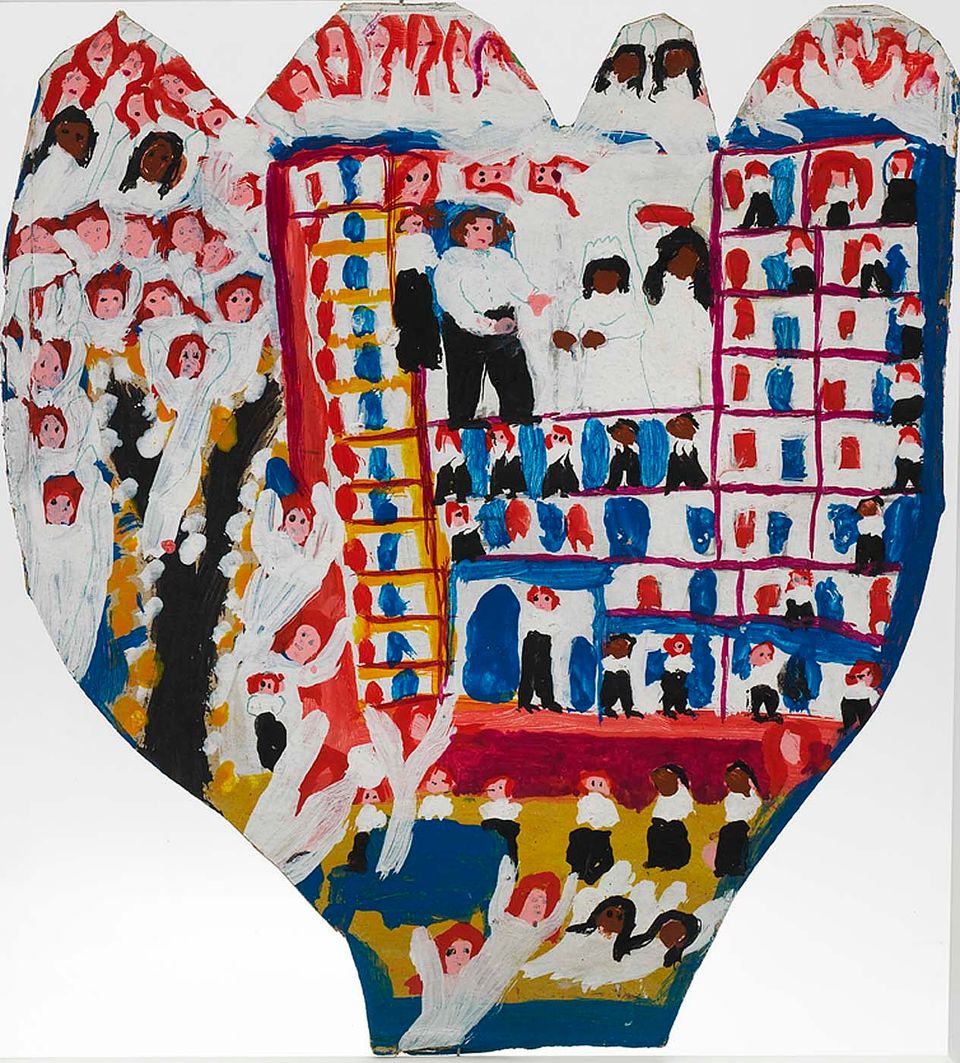Copied
Eddie Arning, Untitled (American Flag), ca. 1964, crayon and graphite on paper, sheet and image: 22 × 17 in. (55.9 × 43.2 cm) mount: 23 in. × 17 5⁄8 in. (58.4 × 44.8 cm), Smithsonian American Art Museum, The Margaret Z. Robson Collection, Gift of John E. and Douglas O. Robson, 2016.38.1
Copied
Artwork Details
- Title
- Untitled (American Flag)
- Artist
- Date
- ca. 1964
- Location
- Not on view
- Dimensions
- sheet and image: 22 × 17 in. (55.9 × 43.2 cm) mount: 23 in. × 17 5⁄8 in. (58.4 × 44.8 cm)
- Credit Line
- The Margaret Z. Robson Collection, Gift of John E. and Douglas O. Robson
- Mediums Description
- crayon and graphite on paper
- Classifications
- Subjects
- Object — other — flag
- Object Number
- 2016.38.1
Artwork Description
(We Are Made of Stories: Self-Taught Artists in the Robson Family Collection, 2022)
Exhibitions
July 1, 2022–March 26, 2023
We Are Made of Stories: Self-Taught Artists in the Robson Family Collection traces the rise of self-taught artists in the twentieth century and examines how, despite wide-ranging societal, racial, and gender-based obstacles, their creativity and














